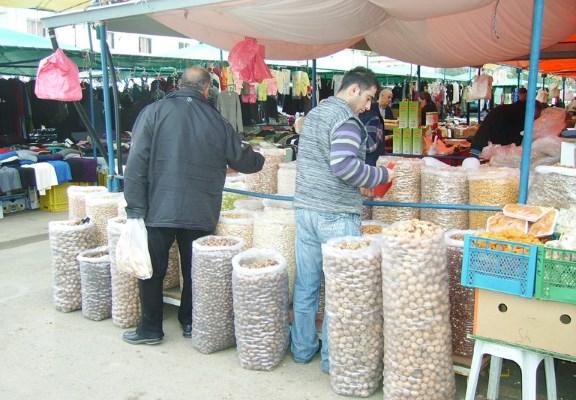Flora
St. George of the Latins
25 October, 2009Independence to the Present Day
25 October, 2009
- Flora | North Cyprus
Cyprus is an island which overall has an abundant variety of flora. Concentrating on the North, in excess of a thousand kinds were collected by Dr. Deryck Viney between 1988 and 1993. In 1994 an illustrated publication of his findings was produced under the title, “An Illustrated Flora of North Cyprus” and it is an invaluable guide to the amateur or professional botanist. There are over a hundred Cyprus endemic species and nineteen North Cyprus endemics to be searched for, with Spring being the best time to do it. Late February to the end of April are the optimum months for seeing Cyprus in bloom. Though there are many woodland species that will emerge during the winter months, such as cyclamen, narcissi, crocus and muscari. Flower availability will depend tremendously on the previous winter rainfall, and excessive heat in April may bring a premature end to the flowering season. However there are hardy wildflowers that continue to bloom well into May and June.
The first colour of Spring is the bright yellow of the Oxalis pes-caprae. An agricultural nuisance but a welcome splash of colour in the drab landscape, this is soon followed by the anemones in white, pale mauve, blue and red, and after them come some of the Ophrys and Orchis species, for example Ophrys fusca (the Brown Bee Orchid) and Orchis morio (Green-winged Orchis) are widespread and can be found in the pine forests and on rocky hillsides. The Mandrake (Mandragora officinarum) has flowers in the white to dark blue spectrum and grows as a flat cluster of broad green leaves with the flowers nestling in the middle. It can easily be seen along the road-sides and on many of the ancient sites. The Crown Daisy, (Chrysanthemum coronarium) covers the fields and verges with pale orange, bathing the countryside in sunshine.
As the weather starts to get warmer, the most colourful of the Spring flowers clothe the scene. Asphodels, Calendula and three varieties of Cistus (Cistus creticus, Cistus parviflorus and Cistus salviifolius) produce a palette of varying shades in every direction. The giant fennel (Ferrula communis) is an inedible plant and grows unchecked in fields and mountains. It grows to a height in excess of 2m with a feathery leaf, used by the local florists in flower arrangements. With many heads of bright yellow flowers, towering over all other species it is unmissable.
The vibrant blues of the anchusas (Anchusa azurea, tall, bright and hairy, and Anchusa undulata, low growing, dark blue almost purple), mix with the paler blue of the Dyer’s alkanet (Alkanna Lehmanii), and the equally colourful echiums, (Echium angustifolium, narrow-leaved Bugloss, and Echium plantagineum, viper’s Bugloss).
Flowering from February to May are the ranunculus that grow in the foothills of the mountains. The turban buttercup or Persian crowfoot (Ranunculus Asiaticus), grow in a variety of colours from cream to yellow, deep scarlet, and white flashed with red. Though similar, they are not to be confused with the anemones that share the same habitat.
The common pink corn flag (Gladiolus italicus) can be found in the corn fields as can the Cyprus black tulip (Tulipa cypria), not truly black but very dark red, it is a Cyprus endemic that is becoming rare due to the destruction of its habitat.
The Arabian sun rose (Fumana Arabica)and the endemic Cyprus sun rose (Helianthemum obtusifolium) favour the same habitat and are very similar, with papery thin yellow petals, growing in rocky terrain they flower from February to May.




